The Vivekananda International Foundation (VIF) hosted a delegation from Tsinghua University, Beijing, on 29 August 2018. The delegation was led by Prof. Yan, Xuetong, Dean of the Institute of International Relations, and comprised of Prof. Sun Xuefeng, Dr Li Li and Liu Zhuang. Dr Arvind Gupta, Director VIF, delivered the opening remarks and presided over the session. The interaction was attended by Amb. Satish Chandra, Lt Gen Ravi Sawhney, Amb. Prabhat P. Shukla, Amb. R. Rajagopalan, Lt Gen Gautam Banerjee, Amb. TCA Rangachari, Lt. Gen S L Narasimhan and many other think tank members.
US-China conflict and India-China Cooperation
The Chinese participants made a presentation on the evolving global situation. They argued that the US-China trade conflict was becoming severe and it was likely to be protracted. They highlighted that China was not only the target country; the tariffs initiated by Donald Trump might gradually affect other countries as well. Under Donald Trump, the US has changed itself from an advocate of free trade to a guardian of protectionism. In the process, it was disregarding the mandate of the World Trade Organisation (WTO) for developing countries. The US was trying to change the international order without any blueprint. They thus proposed that, at this juncture, both India and China should look for creative ways of cooperation. Both the countries should step up economic cooperation in South Asia especially keeping in view the challenge of poverty in the region.
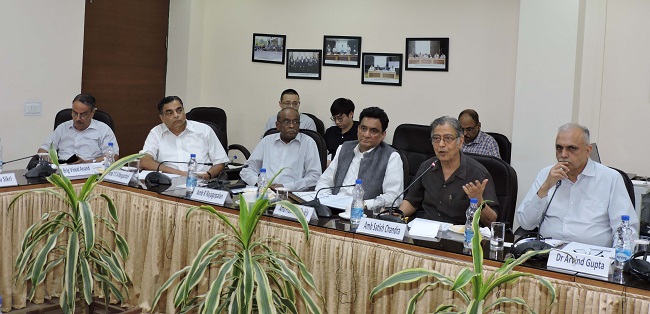
India-China Cooperation
The Chinese participants observed that India and China could together play a role in shaping the international order. They reiterated that the border issue was unlikely to be solved soon. Hence both the countries should think about broader issues in the bilateral relations. They also proposed for cooperation in Artificial Intelligence (AI), that being one of the areas that would affect both the countries. They further advocated greater economic cooperation and people-to-people ties between the two countries. Governments from both the sides should facilitate in creating an environment for cooperation and they should take an objective view of the relationship.
Indo-Pacific
The Chinese participant assessed the concept of Indo-Pacific. They said that in China there was a discussion about the origin and the driving force behind the concept; a certain section believes that it is the US while the others believe it is Japan. They argued that the future of Indo-Pacific as a concept appeared to be uncertain. They further said that both India and China may face this uncertainty and coping with this situation will be a big challenge in the future.
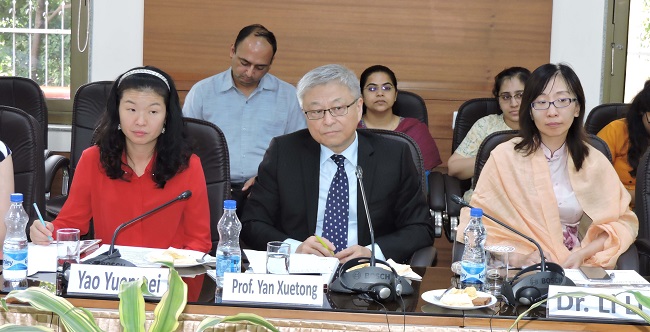
India-China Cooperation in Afghanistan
The participants from India proposed that both India and China should work together to make Afghanistan stable country. Any project based on collaboration can only happen if the region becomes stable. If there is a resurgence of Taliban in Afghanistan it will affect China as well. In fact, the Xinjiang province of China will experience the repercussions. The Chinese delegates responded in generalities, and expressed the caution that external solution was unworkable whereas Afghanistan was a graveyard of superpowers.
India-China Maritime Cooperation
Participants from India highlighted that the leitmotif of maritime interactions has been premised on the management of traditional and non-traditional securities. Ironically, inter-state cooperation on challenges to ocean health has invariably been given a short shrift. Ocean acidification, eutrophication, overfishing and plastic pollution have assumed huge proportions, but have attracted the least collaboration among the states. As a result, today ocean health is under threat and so is the Man’s food security. The positive aspect of these challenges is that they offer a potential for a new approach to cooperation between India and China, and provide a regional framework going beyond bilateral issues.
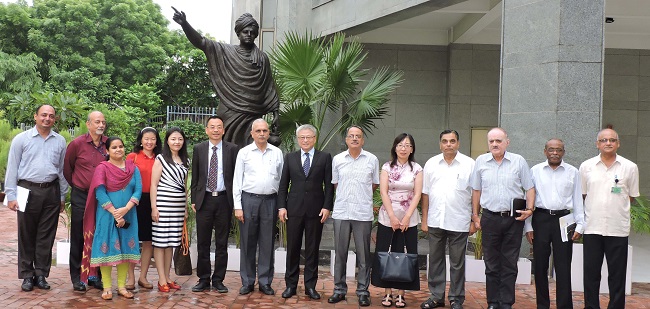
India and China being the two emerging powers in Asia with substantial capacities and influence in the Indian Ocean and the Asia Pacific, may yet not have the wherewithal to restore ocean health all by themselves. Nevertheless, bilateral collaboration between India and China has immense potential and can progress in a graduated manner in order to build consensus. The proposed mechanism is as follows:-
- India and China will need to have important roles in ocean governance.
- Convergence will have to be found in regional forums like the Association of Southeast Asian Nations (ASEAN), East Asia Summit (EAS), Bay of Bengal Initiative for Multi-Sectoral Technical and Economic Cooperation (BIMSTEC), South Asian Association for Regional Cooperation (SAARC), Djibouti Code and Indian Ocean Rim Association (IORA).
- Organisations that overlap both the oceans - EAS and ASEAN - would be ideal forums for providing the interface for exchange of knowledge between think-tanks, universities and research institutes in order to build awareness; and share information, best practices and technology.
- Task Forces may be instituted in the sub-regions (like BIMSTEC) for studying the specific local challenge. Where the sub-region lacks information, capabilities or technologies, it would have to be drawn from external sources.
- A framework of trilateral cooperation between China, India and ASEAN can provide the overarching political legitimacy and capacity.
These steps would also further Prime Minister Modi’s vision of building an inclusive Indo-Pacific.
Points of Discussion
- India-China interaction at the multilateral level such as climate change, WTO, maritime cooperation appears to be stable.
- During Xi Jinping’s visit to India in 2014, he reiterated that the border will be solved at an ‘early date’. However, this was not reflected in any of the Chinese actions and interactions thereafter. The Indian side highlighted that if progress is made on the issue, it can become the single most important confidence building measure between the two countries.
- In 2014, at the “Confidence-Building Measures in Asia (CICA) Summit” held in Shanghai, Xi Jinping called for ‘Asia for Asians’. Hence, if the US is willing to give away the responsibility as the superpower, it should be a boon to China as it will provide China with a conducive environment to pursue the idea of ‘Asia for Asians’. Again, at the 19th National Congress of the Communist Party of China, Xi Jinping talked about the alternative world order. Based on these proposition by China, the Indian side raised its concerns, as to what kind of order would that be, what would be the role of India, ASEAN, Japan and the US?
- The India-China trade has increased to USD 84.44 billion. The trade is skewed in favour of China making the trade deficit to USD 52.9 billion. The situation has become unsustainable and needs to be urgently addressed.
- It was agreed that there is a desire in both countries to improve relations. There is a desire in India also to solve the longstanding problem of the border. Steps such as exchanging maps and more clarification on the Line of Actual Control (LAC) need to take place so that there is tangible progress.
- More stress should be given on the cultural contacts, people to people contact and interaction between Universities and think tanks.

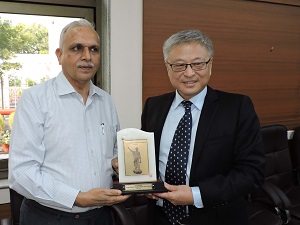




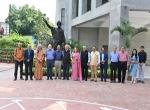


Post new comment